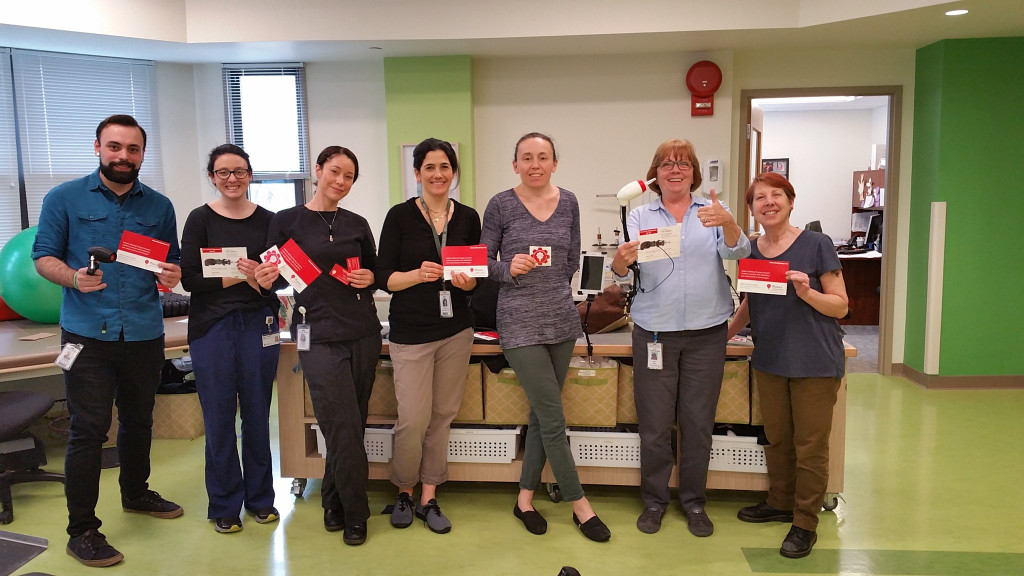We are excited to tell you about the first “homebuilt” LipSync — the first one made outside of our initiatives.

Above: Jason and Scott, of Comcast, show off the LipSync device they built
Below: The first "homebuilt" LipSync, up close and personal

While we’ve had makers build LipSyncs under our careful watch as part of our makeathons and similar initiatives, this is the first time makers had built a LipSync on their own.
Scott, who works at Comcast in Philadelphia to make their products accessible, had found our Hackaday page and became interested in the LipSync. As part of one of Comcast’s lab weeks — an initiative allowing “employees to spark innovation by working on projects of their own choosing” — Scott decided he would build one.
In a team with his co-worker Jason, Scott built it over the course of the week, using our instructions and videos as a guide. Along the way they documented their build and sent us extensive feedback on our instructions, which will greatly benefit the next makers who decide to build a LipSync on their own.
Once they built the LipSync, they connected it to a Comcast web based interface that allowed them to use it to control a television. One of the things that had intrigued Scott about the project was the potential for ways to make television more accessible for people with low hand dexterity.
PS Back in April, we were at the American Occupational Therapist Association (AOTA) Annual Conference.
We weren’t sure how we would be received by the occupational therapists. There is huge interest, we discovered. Over 500 people signed up — we have got a notebook filled with pages of names. We found that occupational therapists related to the concept of “making,” with some who had been in the business for over 30 to 40 years relating to having to take woodworking classes and the like to create their own solutions, in the absence of products on the market at the time.
As well, in addition to meeting our friends at Comcast and seeing the new LipSync in person, we dropped off six of our own LipSyncs to local spinal cord rehab facilities, disability centres, and assistive technology resource centres. Here’s a picture of Inglis House, a Philadelphia-based long-term care community that serves 252 residents “with severe neurodegenerative physical disabilities resulting in paraplegia and quadriplegia,” and their new LipSync:

 Makers Making Change
Makers Making Change
Discussions
Become a Hackaday.io Member
Create an account to leave a comment. Already have an account? Log In.